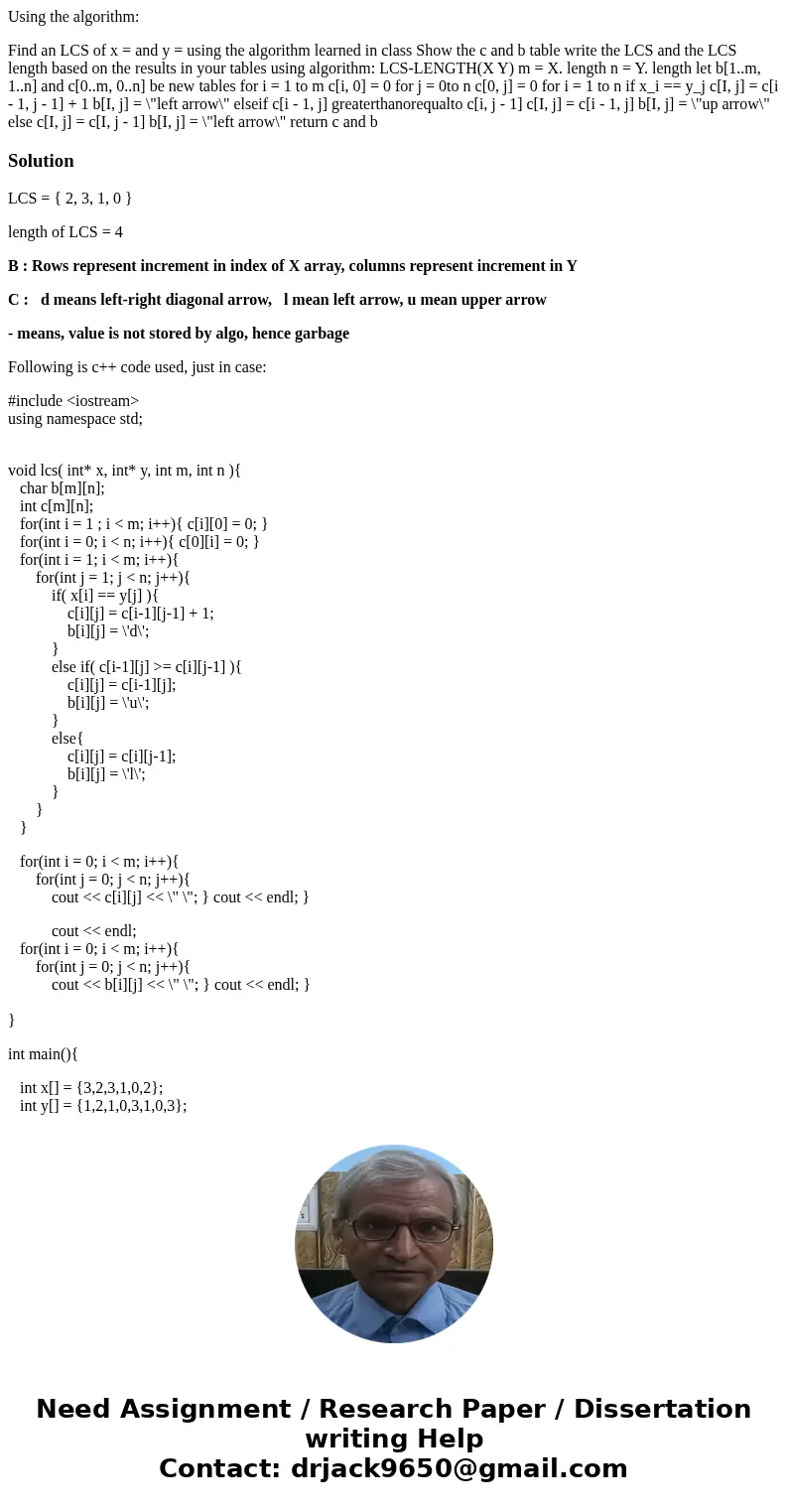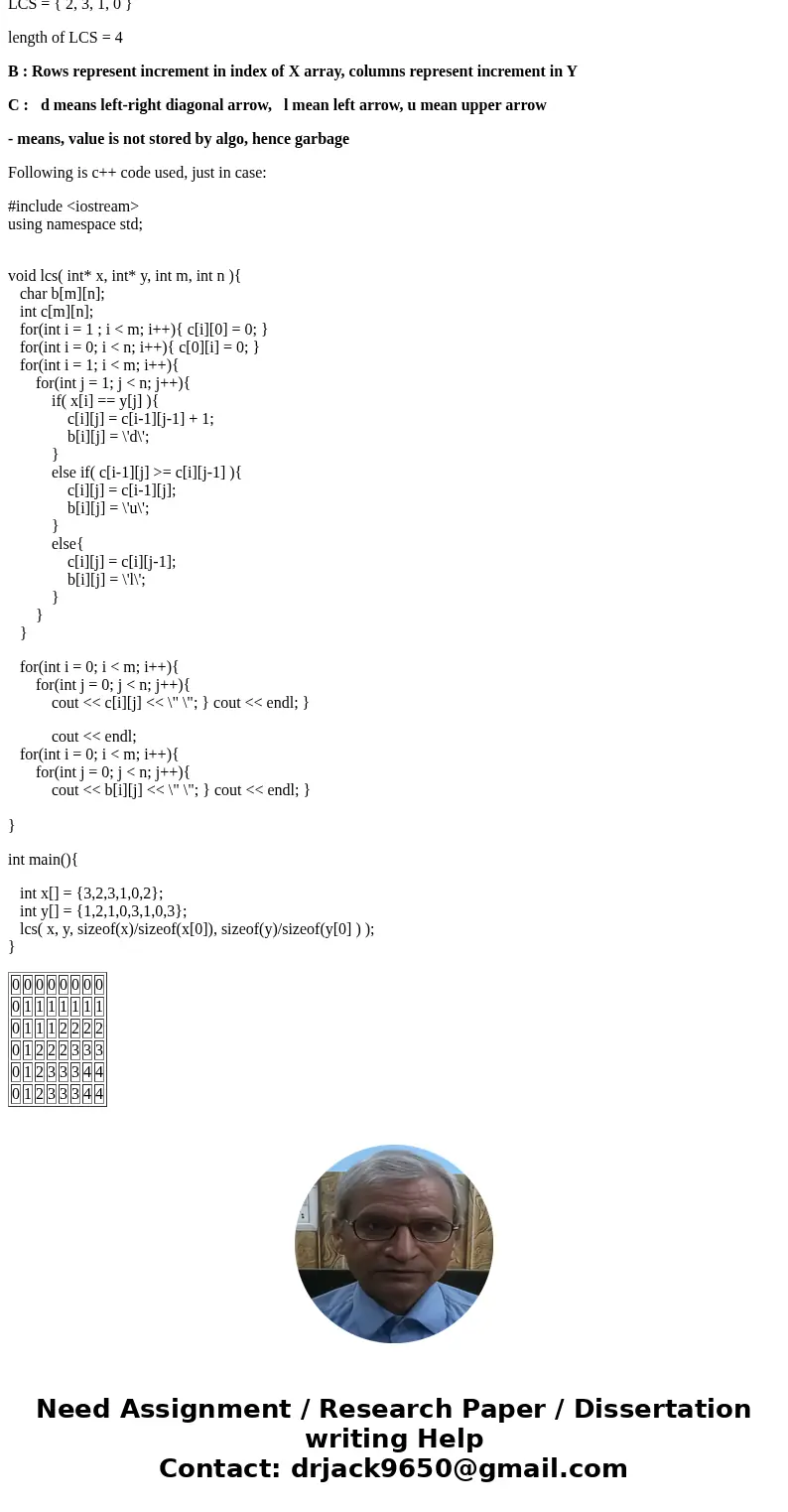Using the algorithm Find an LCS of x and y using the algor
Using the algorithm:
Find an LCS of x = and y = using the algorithm learned in class Show the c and b table write the LCS and the LCS length based on the results in your tables using algorithm: LCS-LENGTH(X Y) m = X. length n = Y. length let b[1..m, 1..n] and c[0..m, 0..n] be new tables for i = 1 to m c[i, 0] = 0 for j = 0to n c[0, j] = 0 for i = 1 to n if x_i == y_j c[I, j] = c[i - 1, j - 1] + 1 b[I, j] = \"left arrow\" elseif c[i - 1, j] greaterthanorequalto c[i, j - 1] c[I, j] = c[i - 1, j] b[I, j] = \"up arrow\" else c[I, j] = c[I, j - 1] b[I, j] = \"left arrow\" return c and bSolution
LCS = { 2, 3, 1, 0 }
length of LCS = 4
B : Rows represent increment in index of X array, columns represent increment in Y
C : d means left-right diagonal arrow, l mean left arrow, u mean upper arrow
- means, value is not stored by algo, hence garbage
Following is c++ code used, just in case:
#include <iostream>
using namespace std;
void lcs( int* x, int* y, int m, int n ){
char b[m][n];
int c[m][n];
for(int i = 1 ; i < m; i++){ c[i][0] = 0; }
for(int i = 0; i < n; i++){ c[0][i] = 0; }
for(int i = 1; i < m; i++){
for(int j = 1; j < n; j++){
if( x[i] == y[j] ){
c[i][j] = c[i-1][j-1] + 1;
b[i][j] = \'d\';
}
else if( c[i-1][j] >= c[i][j-1] ){
c[i][j] = c[i-1][j];
b[i][j] = \'u\';
}
else{
c[i][j] = c[i][j-1];
b[i][j] = \'l\';
}
}
}
for(int i = 0; i < m; i++){
for(int j = 0; j < n; j++){
cout << c[i][j] << \" \"; } cout << endl; }
cout << endl;
for(int i = 0; i < m; i++){
for(int j = 0; j < n; j++){
cout << b[i][j] << \" \"; } cout << endl; }
}
int main(){
int x[] = {3,2,3,1,0,2};
int y[] = {1,2,1,0,3,1,0,3};
lcs( x, y, sizeof(x)/sizeof(x[0]), sizeof(y)/sizeof(y[0] ) );
}
| 0 | 0 | 0 | 0 | 0 | 0 | 0 | 0 |
| 0 | 1 | 1 | 1 | 1 | 1 | 1 | 1 |
| 0 | 1 | 1 | 1 | 2 | 2 | 2 | 2 |
| 0 | 1 | 2 | 2 | 2 | 3 | 3 | 3 |
| 0 | 1 | 2 | 3 | 3 | 3 | 4 | 4 |
| 0 | 1 | 2 | 3 | 3 | 3 | 4 | 4 |


 Homework Sourse
Homework Sourse